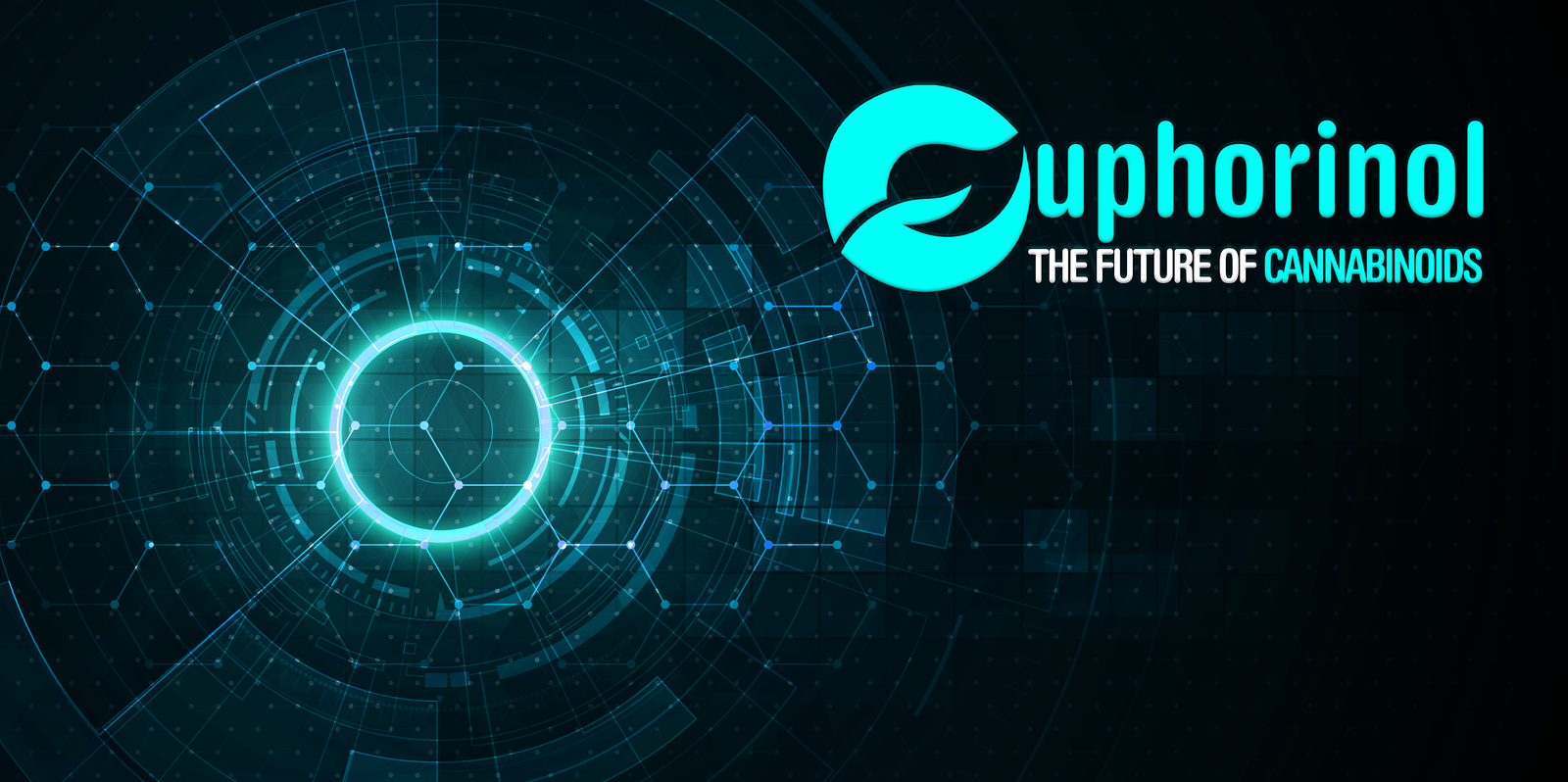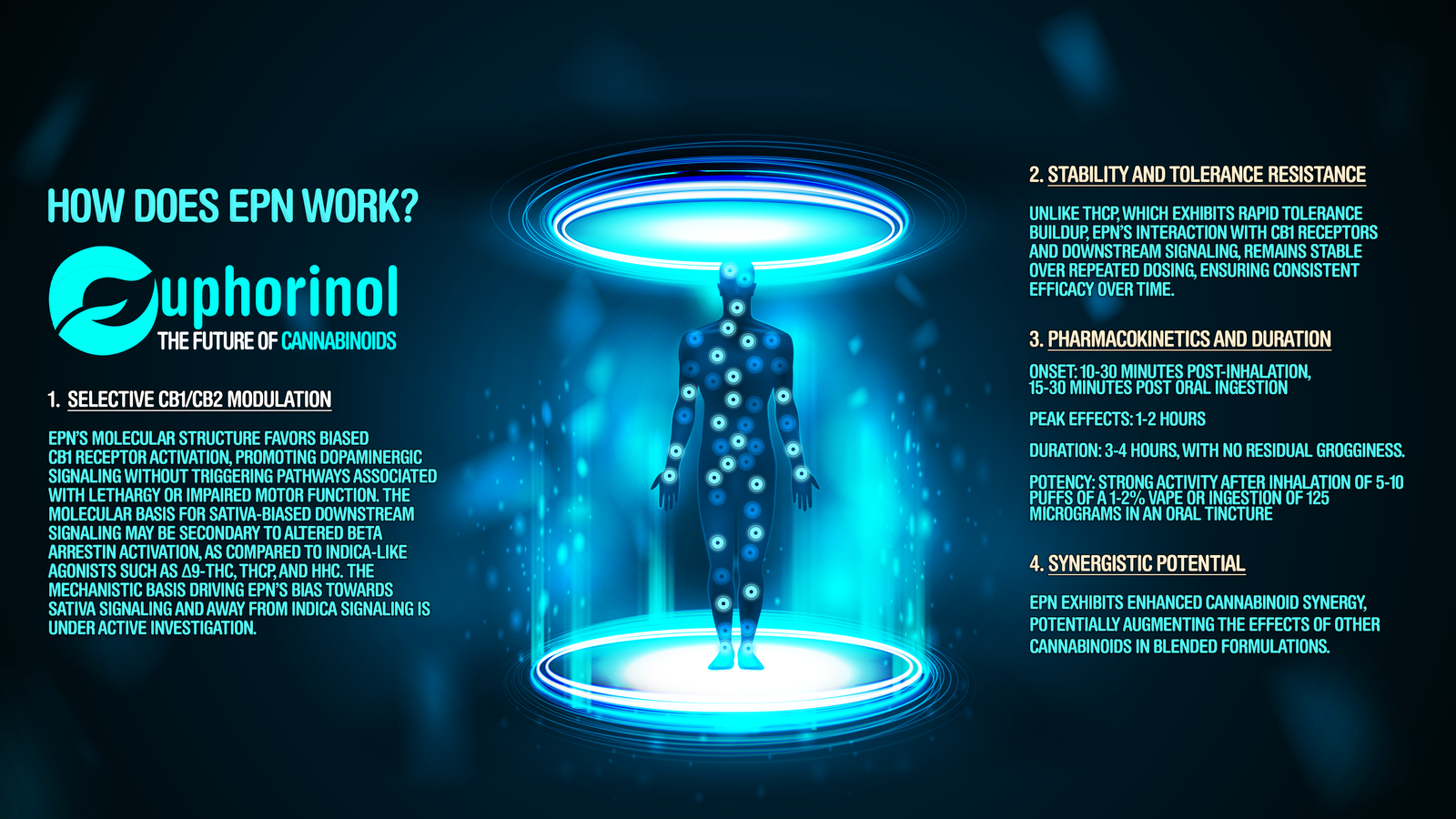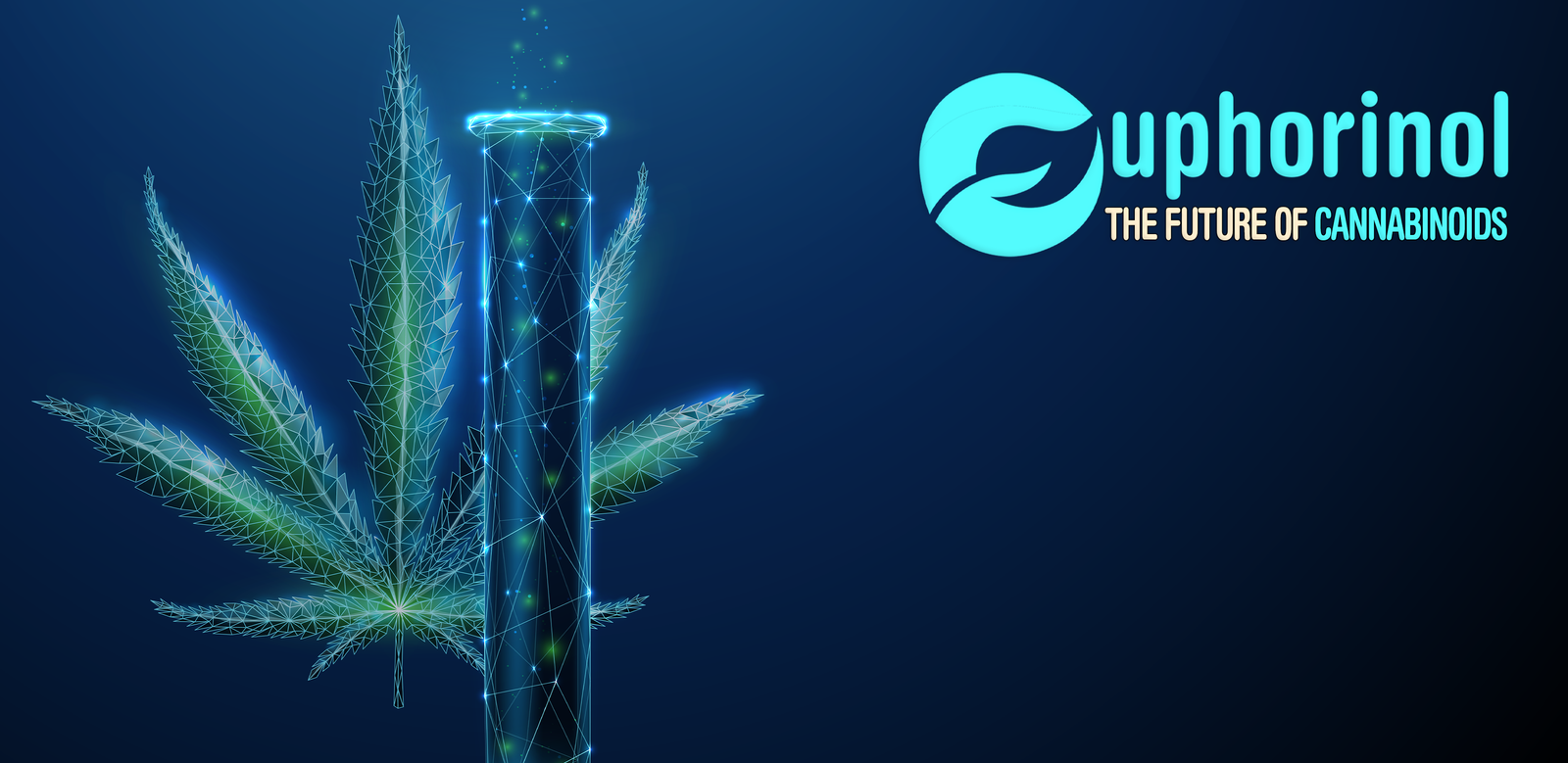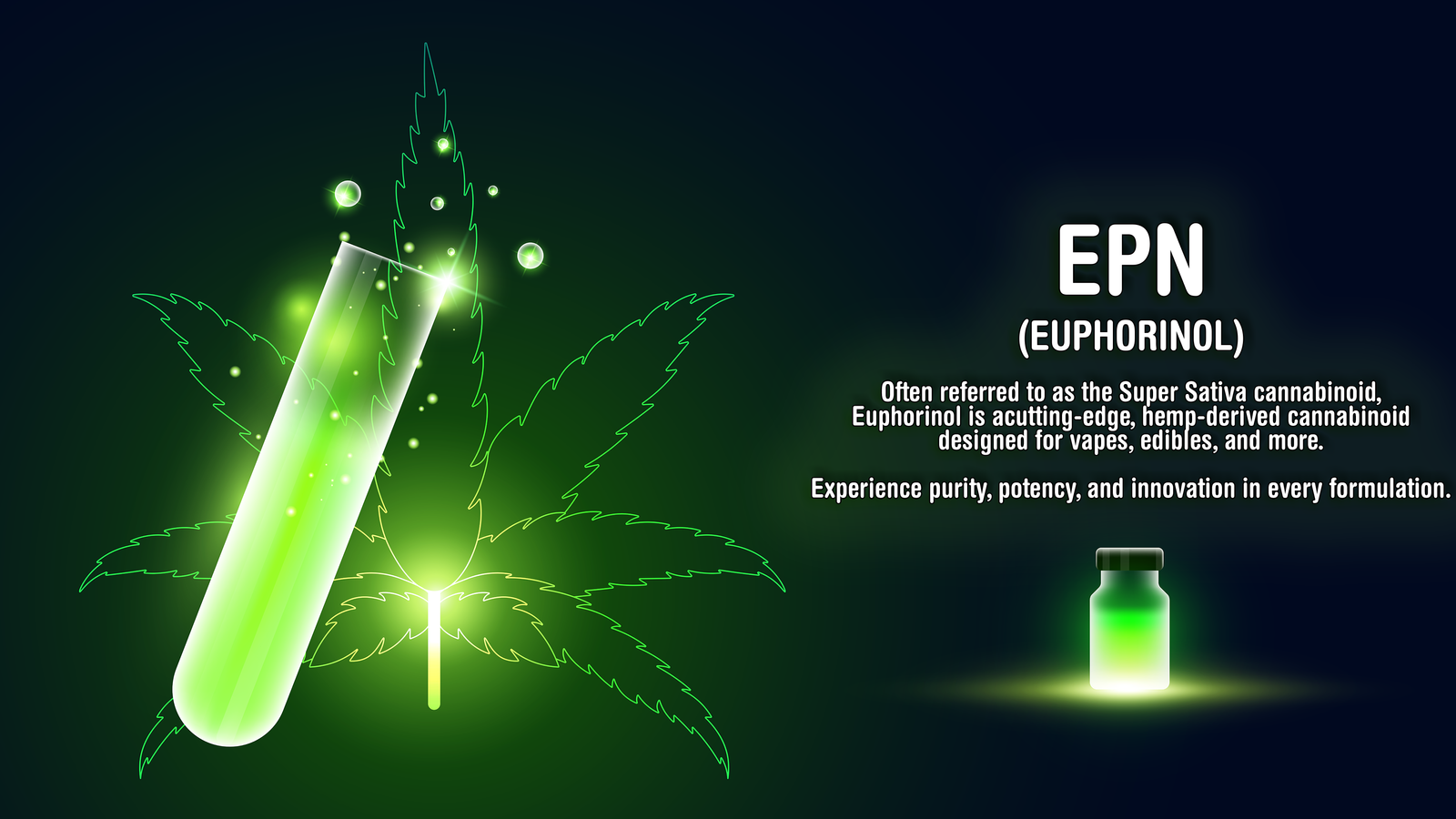EPN Article / Linkedin / 3/5/2025
We’ve been getting many questions about EPN (Euphorinol)—and we get it. Anytime
something truly new hits the cannabinoid space, there’s curiosity, excitement, and, of
course, speculation.
With this in mind, we would like to provide this informational sheet to help clarify
things. Whether you are a formulator, retailer, or someone who enjoys staying ahead of
the curve, it will provide you with a solid understanding of what makes EPN unique, how
it functions, and why people are discussing it.
We’re always happy to chat, so if you have more questions after reading, please don’t
hesitate to contact me.
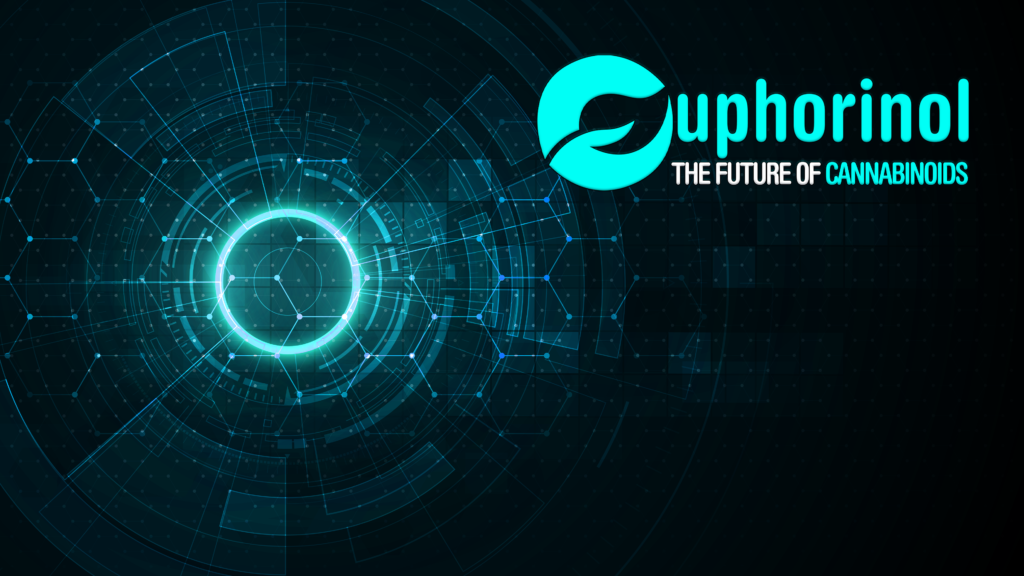
EPN / EUPHORINOL – Information
EPN has been tested extensively, both in vitro and in the clinic. Initial work was
conducted in human cell lines stably transfected with human CB1 or CB2 receptors.
Binding affinity (Ki) for hCB1R was 1.2 nanomolar and for hCB2R was even stronger, with
a Ki of 300 picomolar. In translational studies, the substance was delivered by vape as a
2% solution dissolved in crystal-resistant distillate. Dosing of 5 puffs produced a strong
Sativa-like response, evidenced by clarity and a euphoric sensation, in the absence of
motor impairment, disorientation, lethargy, and stupor. There was no effect on hunger.
There was likewise no evidence of hallucination, dyskinesia, vertigo, or anxiety. When
administered orally, a mild effect was appreciated upon dosing of 62 micrograms, that
became more robust at a dosage of 125 micrograms. Current studies underway are
exploring higher oral doses (in the range of 0.25 – 0.5 milligrams). The longevity of the
inhalational dose was reproducibly in the range of 3-4 hours, with peak action observed
from 30 minutes to 2.5 hours. To date, no addiction has been noted upon repeat twice
daily dosing. As of today, a registry has accumulated responses from approximately 150
healthy subjects. Two adverse events have been noted subsequent to unintentional
massive dosing (25-30 puffs) characterized by 1-2 hours of mild abdominal cramping
that resolved spontaneously. There has been no evidence of hypotension or immobility
at even suprapharmcologic dosing. The lack of a classic THC tetrad effect at high doses
indicated to us that EPN had indeed achieved the desired level of biased signaling.
The above data are consistent with the intended biochemistry profile of the agent. EPN
is a semi-synthetic, derived from botanical sources, that was designed to leverage
biased signaling of the hCB1 receptor. Current agents in the market that bind hCB1R
classically trigger neuronal pathways that are biased towards symptoms of sedation and
a mild stupor (colloquially known as “stoned”). This constellation of symptoms is noted,
for example, after dosing with THC, THCH, and THCP, and THCjd, but not with
cannabinoids with shorter alkyl chains such as THCV and THCB, We discovered that the
CB1 receptor exhibits biased signaling when the ligand is configured to modulate the
angle of the olivetol – alkyl chain in a specific orientation. Our research has established
that this angulation, within a fairly narrow range, elicits signaling that manifests in
euphoria without concomitant induction of sedation and depressed level of
consciousness. Once this phenomenon was recognized, we carried out a detailed study
of structure activity relationships to determine the optimal angulation of the alkyl chain.
EPN represents one of several semi-synthetic analogues which has angulation within this
target range. We have also identified several new EPN analogues that have more
profound influence on biased signaling towards the Sativa-profile. These are under
active investigation. To date, this series of compounds exhibits a binding affinity to
hCB1R approximately 50-100 times greater that that of d9 THC. We have also
established that EPN is not a full agonist, such that overdosing is not associated with
adverse events of canonical CB1R signaling (e.g. loss of blood pressure, ataxia,
depressed level of consciousness).
It is of interest that we are also seeing an even stronger impact on hCB2R. This was not
predicted and is still undergoing structural analysis of the receptor to understand its
basis. It does suggest that EPN will have a dramatic impact on inflammatory pathways.
We are currently carrying out in vitro assays utilizing NF-kappaB reporter assays in cells
stably transfected with hCB2R to better calibrate the functional response to the
picomolar affinity of the EPN ligand. From a translational perspective, we surmise that
this level of picomolar affinity will encourage exploration of EPN for treatment of
arthritis, colitis, and muscular discomfort. Because EPN is not associated with stupor,
individuals may be able to maintain full functioning yet benefit from relief of
inflammation and pain. We are studying whether the strength of this anti-inflammatory
action is superior to ibuprofen and other NSAID’s.
EPN products will be available soon for testing in a prestigious, GLP, independent
quality control laboratory in the USA where it’s concentration and purity can be
assessed and a standard COA generated. The molecule will become available in various
formulations, initially as a vape fluid, tincture, and gummies, but later expanding into the
neutraceutical space in beverages and other food matrices. To the best of our
knowledge, there is no other CB1R ligand that has intentionally been designed to
achieve nearly pure Sativa-biased signaling. Whether this is of interest to the market
remains to be seen. We do expect that there will be a demographic that appreciates the
euphoric effect without a compromising of intellectual and motor function and, most
importantly, is non-sedating.

